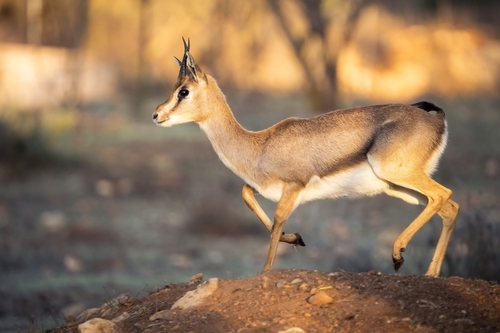
Mountain Gazelle
The mountain gazelle, with its elegant horns and nimble frame, thrives in arid, rocky terrains. Its swift movements and keen senses make it adept at evading predators while contributing to seed dispersal in its habitat, highlighting its ecological importance.
10-12 years
Lifespan
11.79 - 74.84 kg
Weight
Length: 12.8 - 14.9 m
Size
Brown, Yellow, Black, White
Color
1 year
Age of Sexual Maturity
2-3 months
Age of Weaning
60 mph
Top Speed
Endangered
Conservation Status
Decreasing
Population Trend
Characteristics
Gazella gazella, commonly known as the mountain gazelle, is native to the rocky and mountainous regions of the Middle East. It has a slender body, long legs, and graceful horns. Known for its agility and speed, it plays a critical role in its ecosystem as both prey and seed disperser.
Distribution Range of the Mountain Gazelle
Gazella gazella, commonly known as the mountain gazelle, is native to the Middle East. Its geographical distribution primarily includes countries such as Israel, Palestine, Jordan, and parts of Saudi Arabia. Historically, its range also extended into Syria and Lebanon, although populations in these regions have significantly declined or are possibly extirpated.
Mountain Gazelle's Habitat
Environmental Conditions
Mountain gazelles inhabit a variety of environments within their range, including foothills, mountainous areas, and plateaus. They are adapted to arid and semi-arid conditions, with a preference for open terrain that provides adequate visibility and escape routes from predators. The climate in their typical habitat can range from hot, dry summers to mild, wetter winters.
Ecological Niche
The mountain gazelle occupies a niche as both a browser and grazer, feeding on a wide variety of vegetation including grasses, leaves, and shrubs. This dietary flexibility allows it to thrive in environments where water and food resources can be sparse. Gazella gazella is also an important prey species for local predators, contributing to the ecological balance within its habitat.
Copyright @ Nature Style Limited. All Rights Reserved.
 English
English